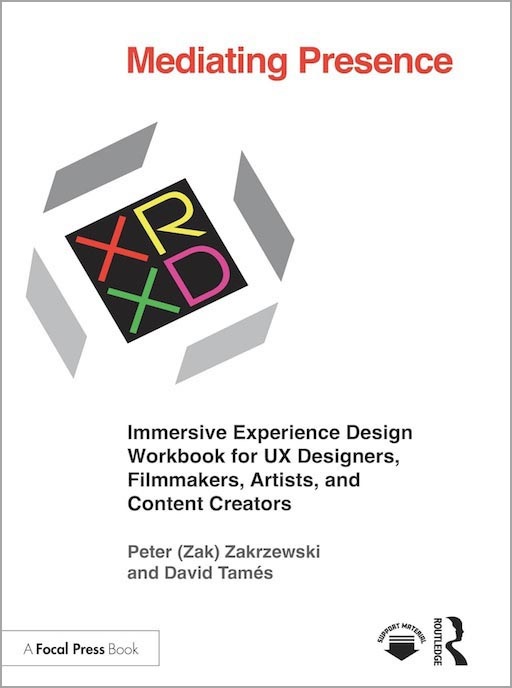About the Book

Mediating Presence: Immersive Experience Design Workbook for UX Designers, Filmmakers, Artists, and Content Creators provides the foundation for a broader understanding of the impact of XR as the next medium. The methods presented draw from a wide range of disciplines and professional practice to provide a practical guide to design methods, production techniques, best practices, and terminology that provides an effective road map for developing immersive experiences using augmented reality, virtual reality, augmented virtuality, and other emerging immersive media forms.
In this book, media designers Peter (Zak) Zakrzewski and David Tamés present a comprehensive framework for XR media experience design (XRXD) that will allow UX designers, filmmakers, artists, and content creators to connect their audiences to rich, multimodal, immersive experiences for entertainment, learning, creating, and healing. This book guides the reader through a 12+1-step design-based model for creating XR experiences. Each step is accompanied by specific media design methods expressly created for or adapted to XR content creation. The theoretical concepts and methods covered address the specific context and meaning aspects of the XR media environments being created.
Reviews
“Peter (Zak) Zakrzewski and David Tamés go beyond the hype to deliver a long-overdue critical and robust methodology for creating a 'better human+computer ecosystem.' Comprehensive, well-researched, and drawn from practical experience, this is not only a 'how to' make but a 'how to think about' book that helps practitioners to deeply leverage the full range of expressive affordances offered by immersive tech.”
— Celia Pearce, Professor of Game Design, XR and game designer and author of PLAYFRAMES and Communities of Play
“Mediating Presence, authored by Peter (Zak) Zakrzewski and David Tamés, presents a rigorous and structured approach to designing extended reality (XR) experiences. It is framed as a workbook and methodological guide to move from conceptual vision to prototype, playtest, launch, and iterative refinement. The book synthesizes insights from UX, filmmaking, participatory design, and immersive media to form a cohesive roadmap for crafting meaningful AR/VR experiences. Zakrzewski and Tamés reframe XR not merely as a technical frontier, but as a medium that demands deep attention to narrative, embodiment, sensory richness, and social context. They advocate for blending rigorous design thinking with attention to the qualitative dimensions of human experience. The text offers more than theoretical frameworks; readers find actionable exercises, templates, and real-world examples that help translate abstract design strategies into tangible system prototypes.”
— Alexander Manu, Strategic Innovation Practitioner
and Professor, OCAD University
